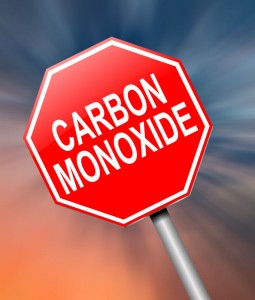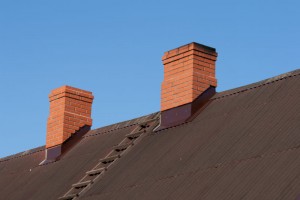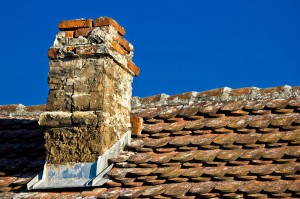by Billy Sweet | Apr 12, 2015 | Installation
If you are installing a wood stove, fireplace or any type of insert you have already made an investment in beautifying your home as well as heating it in a way that uses less energy and saves you money. When you begin the planning phase of your installation process it is necessary to contact a professional fireplace company to make sure your appliance is installed and maintained correctly.

Professional Installation of Stoves, Fireplaces And Inserts
A fireplace installation is a major renovation project, and not one for the weekend do-it-yourself homeowner. Building code inspectors will determine if the size, height and construction of your heating appliance are in accordance with building regulations in your area in order to approve your renovation. Having a professional on your side will alleviate any costly modifications should your new stove or fireplace not have the right proportions.
Avoiding Modifications And Repairs
If you are planning on tackling your own fireplace or wood stove installation project consider this: you are already spending a sizeable investment on the installation of a beautiful heating appliance – don’t you want to avoid spending unnecessary money on modifications? Fireplace installations are big projects, and if not installed correctly could wind up costing a lot more in costly repairs and updates. A fireplace or wood stove is more than just a beautiful addition to your home, they are also functioning heating appliances that when not installed correctly can cause serious damage such as:
- Chimney damage
- Masonry damage
- Overheating inside your firebox
- Carbon monoxide exposure
Maintenance
An added benefit of having a professional install your fireplace or wood-burning stove is that you will have an experienced technician on-hand should you have any questions. After your heating appliance is installed, you will have a team of professionals available to help keep your fireplace clean and swept, as well as inspected for any damage. Having a professional chimney and fireplace company like Billy Sweet Chimney Sweeps in the Boston, North Shore and Portland areas will help you install your appliance to not only make sure it is operating correctly from the first fire, but also to make sure your appliance is swept and inspected regularly.
The bottom line is, fireplace and woodstove installation projects are expensive. Spend that money wisely by employing the help of qualified and licensed professionals. When homeowners attempt to complete these types of projects on their own, the results are unattractive at best, and unsafe at worst. Hiring a professional will give you the peace of mind that the project will be completed beautifully and safely.
We love to see beautiful fireplaces, woodstoves and fireplace inserts installed in homes because they provide a relaxing and comforting aesthetic while giving homeowners the power to heat their homes in alternative ways. We are passionate about helping you use wood-burning appliances to heat your home safely, and the first step is having professionals help you plan and install your heating appliance. Contact the Billy Sweet Chimney Sweep team for a consultation and installation recommendations today.
by Billy Sweet | Mar 27, 2015 | Carbon Monoxide Poisoning
Carbon monoxide is a dangerous gas that can cause poisoning when you are exposed to it. It is a particularly dangerous threat because it is odorless, colorless and otherwise undetectable to the naked eye. When you are exposed to carbon monoxide you inhale the fumes, which prevents oxygen from reaching your organs. The most important thing you can do to protect you and your family from carbon monoxide dangers is to prevent exposure in the first place.

How Does Carbon Monoxide Poisoning Occur?
Carbon monoxide poisoning occurs in several ways, but in residential homes the most common way is through the misuse of heating appliances. In homes where wood-burning heating appliances are used, by-products can be left behind in chimneys. Soot, animal debris and flaked off masonry can all lead to dangerous toxins being release inside the home. Additionally, homes that aren’t well-ventilated can lead to carbon monoxide poisoning because there isn’t efficient air-flow while heating appliances are in use. Lastly, misuse of heating appliances can lead to poisoning, especially if inappropriate materials are being used or the operator doesn’t understand all components of the appliance.
Damaged Chimneys Can Lead To Carbon Monoxide Dangers
In homes where chimneys are older or have not been properly maintained chimneys can become blocked or rusted and this can result in carbon monoxide and other toxins being released into the air. Backdrafting, a common occurrence when chimney dampers and flues are not operating properly, can also lead to carbon monoxide poisoning.
Symptoms Of Carbon Monoxide Poisoning
If you suspect you or someone in your home is suffering from carbon monoxide poisoning, look for these common symptoms:
- Headache
- Weakness
- Dizziness
- Confusion
- Loss of vision
- Loss of consciousness
While these symptoms may seem subtle, they are life threatening. If you see any of these symptoms, remove everyone from the area and get emergency medical care immediately.
Luckily for homeowners, there are ways to prevent carbon monoxide poisoning including:
- Invest in a carbon monoxide detector that will alert you if the dangerous gas is detected.
- Never use stand-alone heating appliances like space heaters in small, enclosed areas.
- Only use wood-burning appliances in well-ventilated areas.
- Make sure you understand how to operate ALL components of your chimney before you light your first fire.
- Only burn appropriate, chemical and paint free wood in your wood-burning appliance.
- Inspect your heating equipment before use to make sure it is operating properly.
The single most important thing you can do as a homeowner is have your chimney professionally swept and inspected at least once a year. Hire a professional and experienced chimney sweeping company like Billy Sweet Chimney Sweep serving the Boston, North Shore and Portland areas to inspect, repair and if necessary, rebuild your chimney. Having an airtight chimney with a working damper and flue is the best way to prevent carbon monoxide build-up from your heating system. Our certified chimney sweeps are ready to inspect your chimneys and recommend any necessary add-ons or repairs. Contact the best in chimney sweeping to keep your home free of carbon monoxide dangers.
by Billy Sweet | Mar 10, 2015 | Chimney Flashing
The bad news is that your roof may leak from time to time, especially after heavy rain or snowfall. The good news is that often the repair is as simple as replacing the flashing, rather than replacing the entire roof. Chimney flashing is not a shingle, but rather a detail that is installed in order to seal the joints that connect the roof to the chimney. These joints are not water tight, so thorough, professionally installed chimney flashing will help keep water away from your chimney. The result is not only a dry chimney, but also a dry and protected home interior.

Types Of Chimney Flashing
There are a few different types of chimney flashing. Aluminum is common and inexpensive, however it is susceptible to corrosion, so it may need to be replaced every so often. Vinyl is another popular choice because it is still affordable but not as durable as other materials. Vinyl can become brittle and crack under harsh weather conditions and like aluminum will probably need to be replaced. On the other hand, steel is more expensive and takes longer to install, but is one of the more durable choices because it will not corrode. Similarly, copper flashing is the most widely recommended material for flashing because it will not corrode or crack but is lightweight like vinyl. Keep in mind, copper is the more expensive option, but after initial installation copper will not need to be replaced and will likely last as long as your roof.
Without Flashing You Can Damage Your Chimney
As a homeowner, if you are wondering whether or not flashing is important, let us save you some time. Flashing is very important! Without proper protection from external elements, your chimney could be vulnerable to water damage. Chimneys are made from brick and concrete, and if exposed to rain and snowfall over time, these materials can chip, crack and crumble. The result is almost always expensive chimney repairs that could have been avoided. If you do not install proper flashing you could be damaging your roof, and leaving your ceilings and wall treatments susceptible to leaks. Flashing is a simple and necessary installation that can save you a lot of homeowner headaches.
It is important to install flashing, but it is equally important to have your chimney inspected to make sure your chimney flashing is doing its job. Depending on the materials used in initial installation, the flashing material could have been damaged, or the joints could have loosened, which is why it is so important to have your chimney regularly inspected by a professional inspection company.
Always Have A Professional Install Your Chimney Flashing
Installing flashing is a task that is best left to the professionals. The experts at Billy Sweet Chimney Sweep in Boston have years of experience inspecting chimneys and making sure flashing is installed properly. If you attempt to install your own flashing you run the risk of installing it incorrectly as well as injuring yourself in the process. Trust the experts to help you maintain your home and recommend the chimney flashing products that are right for your chimney and right for your home maintenance budget.
by Billy Sweet | Jan 28, 2015 | Top Sealing Damper
If you’re a new homeowner or are unfamiliar with your fireplace you may be asking yourself, “what is a fireplace damper?” The damper is arguably one of the most important pieces of your fireplace. Often located near the bottom of your chimney, your damper serves to seal your fireplace shut so no heat escapes when your fireplace is not in use. If your fireplace damper is leaky or malfunctioning it could lead to costly heat loss.

This clip is courtesy of Richie Baxley at Environmental Chimney Service in Asheville NC.
What Is A Top Sealing Damper?
Traditional dampers are located at the base of your chimney, near the throat and/or the chimney box. However, in recent years top sealing chimney dampers are being recommended. A top sealing damper functions essentially the same way but is more efficient at keeping warm air in and cold air out. Located at the top of the chimney, this type of damper seals the chimney where debris and moisture is likely to get in, and heat is most likely to escape.
Better Seal, Less Heat Loss
In general, top sealers are though to be better at keeping heat loss at bay because they provide a tighter seal and reduce heat loss exponentially. These newer, more efficient sealers are now recommended for reducing heat loss and improve heat retention in more homes. Homeowners are now realizing that a traditional damper is not enough to thoroughly and efficiently heat their home(s), especially if a wood-burning fireplace is the principle way they choose to heat their home.
Eliminating Debris Inside The Chimney
Not only are top sealers better at reducing heat loss, they also help prevent debris and moisture from entering the chimney. Debris like twigs and leaves can fall into your chimney, especially if tall trees surround your home. These twigs and leaves can get trapped in your chimney and cause chimney fires, which are a serious hazard for homeowners. Additionally, chimney fires are expensive, costing homeowners $11.7 billion in 2011 alone. Preventing debris inside your chimney with a top sealing damper is one of the best things you can do to reduce your risk of chimney fires.
Eliminating Moisture Inside Your Chimney
Not only does a top sealing damper prevent debris from building up in your chimney, it also seals your chimney so tightly that it prevents moisture from entire your chimney. Rain and snow can enter your chimney and affect the efficiency of it. When you’re trying to heat your home, a clean, dry fireplace and chimney is the most efficient fireplace.
In many homes, top sealing dampers are seen as an important addition to the chimney and fireplace. In addition to chimney caps and traditional dampers, a top sealing damper is a simple add-on that can improve the way your fireplace works – making it cleaner, safer and more efficient.
Billy Sweet Chimney Sweep has been serving the New England area for over 30 years, and can help you update your fireplace to make it burn cleaner, hotter and more efficient. Don’t suffer through the winter months. Update your fireplace with a top sealing damper that will improve the way your fireplace works and help heat your home for less money.
by Billy Sweet | Dec 31, 2014 | Neglecting Chimney Maintenance
At first glance, chimneys seem very robust. They live outside all year, exposed to the elements, and can withstand hundreds of degrees worth of heat, fire after fire. Despite all of this, however, chimneys do need some regular care to keep up with these high demands. Industry experts strongly recommend having the chimney swept and inspected at least once every year and for good reason. Failure to keep up with chimney maintenance can have some devastating consequences.

For wood burning fireplaces and stoves, the chimney will contain a buildup of a material called creosote. This black, tarry material clings to the surface of the chimney and can build up to the point of blocking air flow. Creosote is also highly flammable and is the cause of many destructive chimney fires. It burns at a much higher temperature than wood or gas, and once burning, it can be very difficult to extinguish. To keep your home and family safe, having a chimney sweep remove the creosote is imperative.
Debris found in the chimney can also take the form of an obstruction that reduces or blocks the flow of air. A common obstruction in the chimney is an animal and its nest. Warm chimneys attract small animals like birds, squirrels and raccoons that need a cozy space to wait out the winter. Unfortunately, this means trouble for the home owner. When the toxic fumes from the fire cannot escape through the chimney, they end up in the house. Not only does the creosote and soot leave messy, black residue on walls and furniture, but this lack of ventilation can actually be dangerous. Carbon monoxide, a product of combustion, can cause death when inhaled in high enough concentrations. It also has no color, smell, or taste, making it impossible to detect without relying on a special detector. To avoid the dangers of carbon monoxide from the fireplace, have a chimney sweep out every year.
Chimney inspections should also be done every year. The inspector examines the chimney from inside the house and from the roof to determine its structural soundness. A common problem that inspectors uncover is water damage. In a masonry chimney, water can enter the brick and mortar and cause cracking or even collapse. In all types of chimneys, water can also cause damage to the interior. If the flue lining is made of metal, water exposure can lead to rusted cracks or holes, which then exposes the house to further water damage, carbon monoxide leaks, and potential house fires. A simple inspection could determine if the chimney cap needs to be replaced, which can prevent these problems most of the time.
All in all, failure to keep up with chimney maintenance could cost you money in repairs, your house, and even your life. Instead of risking it, just call to schedule your annual sweep and inspection today. If you live near Boston, Massachusetts or Portland, Maine, contact Billy Sweet Chimney Sweep to speak with a professional.





